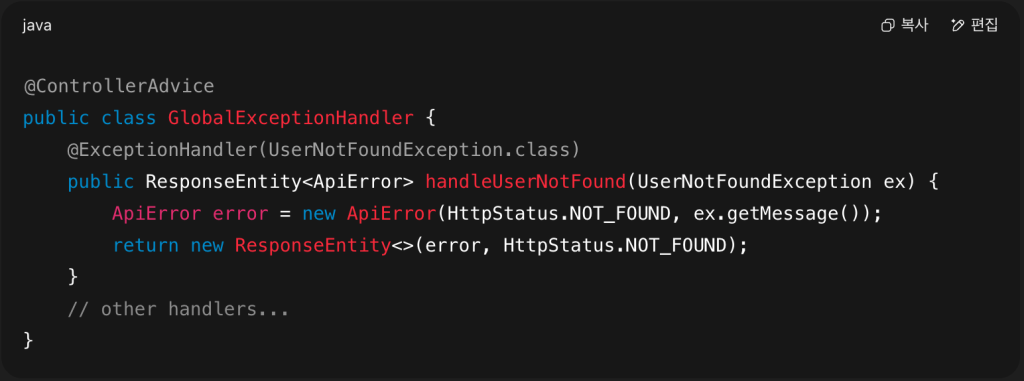When building web applications with Spring MVC or Spring Boot, you’ve likely encountered errors bubbling up to the end user or your logs—especially unexpected ones. The @ExceptionHandler annotation exists precisely to help you handle exceptions neatly within your controllers or globally in a @ControllerAdvice. Here’s a practical breakdown from my years of backend development experience.
What Is @ExceptionHandler?
In Spring MVC, @ExceptionHandler is used to define methods that process specific exceptions thrown in controller logic. These methods catch exceptions, create a proper ResponseEntity or view, log errors, and ultimately prevent stack traces from being exposed to users.
You can attach @ExceptionHandler to:
- A particular controller class (for a narrow scope).
- A global class annotated with
@ControllerAdvice.
How It Works Under the Hood
Here’s the flow in a typical Spring MVC application:
- A request enters via
DispatcherServlet. - If an exception occurs, Spring uses
HandlerExceptionResolverimplementations. - The first to check is
ExceptionHandlerExceptionResolver. It looks for@ExceptionHandlermethods that match the thrown exception. - If a handler method is found, the exception is processed there, and the user sees a curated response instead of a 500 error page or a stack trace.
- If no handler matches, other resolvers take over (e.g. default error page or Whitelabel Error View).
The benefit? Exceptions won’t propagate to your WAS (Web Application Server); Spring handles them cleanly in-line.
Why You Should Use It: Real Experience Insights
✅ 1. Cleaner Client Responses
Early in my career, I returned raw exceptions in a REST API—resulting in confusing JSON dumps that frustrated front-end developers and users alike. After switching to @ExceptionHandler, my API responses looked like:

Much more professional and user-friendly.
✅ 2. Centralized Exception Management
A global @ControllerAdvice saved me from sprinkling try-catch blocks everywhere. Every time a new business exception was introduced, I simply:
Scalable and maintainable.

✅ 3. Seamless Logging & Alerts
Handler methods are a great place to log incidents or instrument monitoring:

No more lost stacktraces or unmonitored failures.
Tips for Using @ExceptionHandler
- Be specific: Handle known exceptions explicitly and leave others to a catch-all that returns
500 Internal Server Error. - Avoid catching
ExceptionorThrowablecarelessly, which can mask programming errors. - Return structured error payloads: fields like
timestamp,status,error,message, andpathhelp front-end frameworks handle responses consistently. - Use proper HTTP codes:
404for not found,400for validation errors,403for access denied, etc. - Log systematically: structured logging with metadata (like request path, user ID) improves traceability.
Summary Table
| Feature | Raw Exceptions | Using @ExceptionHandler |
|---|---|---|
| Clean user response | ❌ No | ✅ Yes |
| Centralized handling | ❌ No | ✅ Yes |
| Proper HTTP status codes | ❌ No | ✅ Yes |
| Structured error payloads | ❌ No | ✅ Yes |
| Easily integrated logging | ❌ No | ✅ Yes |
Final Thoughts
Spring’s @ExceptionHandler annotation isn’t just a tool—it’s a cornerstone of professional, maintainable error handling. It empowers you to:
- Control responses to clients,
- Keep error-related logic together,
- And maintain clean, reliable APIs.
If you’re still relying on default error pages or scattered try-catch blocks, now’s the time to refactor. Your future self—and frontend team—will thank you.